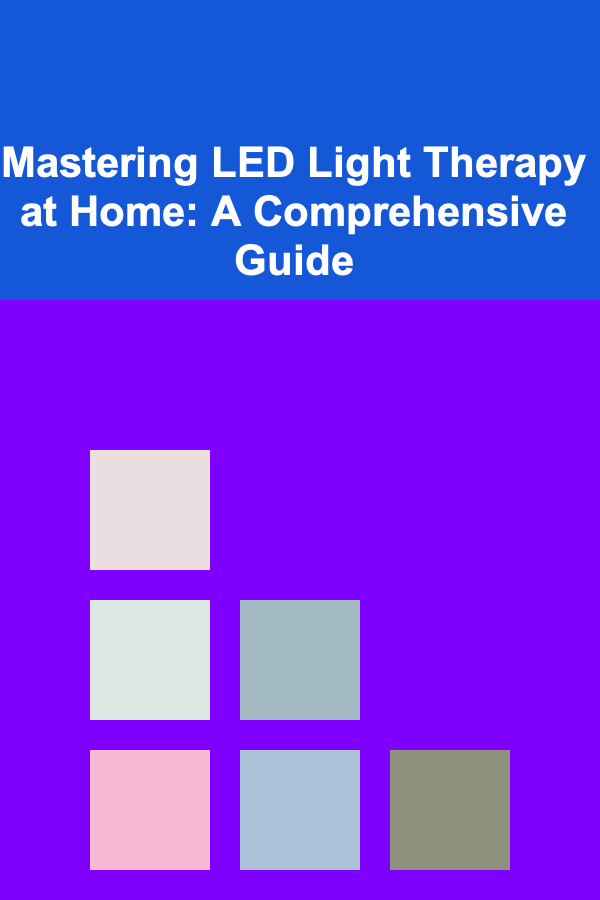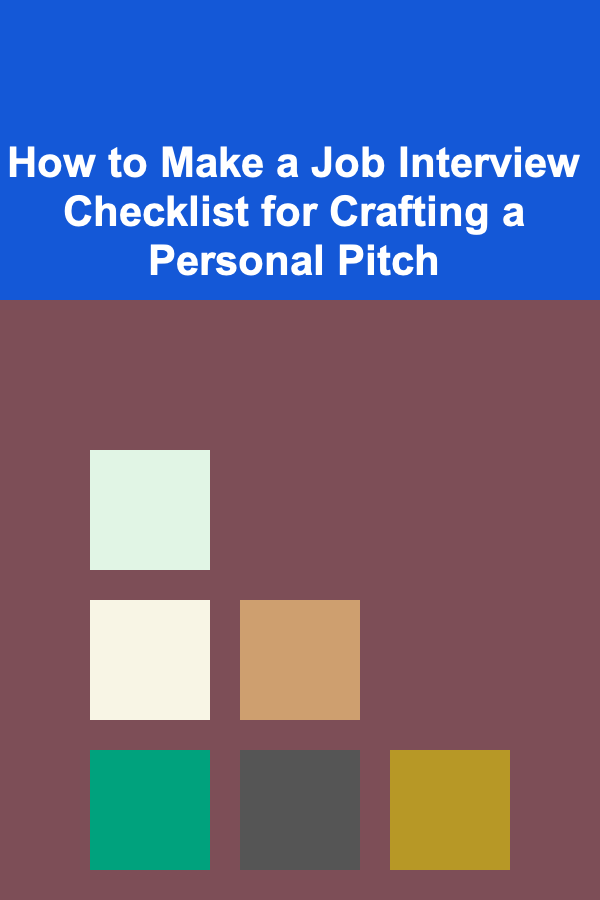
Mastering LED Light Therapy at Home: A Comprehensive Guide
ebook include PDF & Audio bundle (Micro Guide)
$12.99$5.99
Limited Time Offer! Order within the next:

LED (Light Emitting Diode) light therapy has rapidly gained popularity as a non-invasive, effective method for addressing a variety of skin concerns, from acne and wrinkles to inflammation and wound healing. While traditionally offered in professional settings like dermatology clinics and spas, technological advancements have made LED light therapy devices accessible for home use. However, navigating the world of at-home LED devices can be daunting. This comprehensive guide will delve into the science behind LED light therapy, the different wavelengths and their applications, how to choose the right device for your needs, and best practices for safe and effective at-home treatments. We'll explore the potential benefits, address common concerns, and provide a detailed roadmap for incorporating LED light therapy into your skincare routine.
The Science Behind LED Light Therapy
To understand how LED light therapy works, it's crucial to grasp the fundamental principles of light and its interaction with the skin. LED devices emit specific wavelengths of light, typically in the visible spectrum (red, blue, yellow, green) and near-infrared (NIR) range. Each wavelength penetrates the skin to a different depth and triggers specific cellular responses.
Here's a breakdown of the key processes involved:
- Photon Absorption: When LED light is applied to the skin, photons (light particles) are absorbed by specific chromophores (molecules that absorb light) within the skin cells. These chromophores include porphyrins (found in acne bacteria), hemoglobin (found in blood vessels), and cytochrome c oxidase (involved in cellular energy production).
- Cellular Stimulation: The absorption of photons triggers a cascade of cellular events. For example, red and NIR light stimulate mitochondria, the "powerhouses" of the cells, to produce more ATP (adenosine triphosphate), the energy currency of the cell. This increased energy production enhances cellular function, including collagen and elastin synthesis, wound healing, and inflammation reduction. Blue light, on the other hand, targets porphyrins produced by Cutibacterium acnes (formerly Propionibacterium acnes), the bacteria responsible for acne. When porphyrins absorb blue light, they create free radicals that destroy the bacteria.
- Specific Wavelength Effects: The effectiveness of LED light therapy hinges on using the appropriate wavelength for the targeted condition. Red light (typically 630-700nm) penetrates deeper than blue light (typically 405-420nm) and is primarily used for anti-aging, inflammation reduction, and wound healing. Blue light is primarily used for treating acne. Other wavelengths, such as yellow and green, have specific applications related to skin brightening and calming inflammation, respectively.
It's important to remember that LED light therapy is not the same as laser therapy. Lasers use a single, concentrated beam of light that can generate heat and cause tissue damage. LED light therapy, on the other hand, uses a broader spectrum of light at lower intensities, making it a much gentler and safer treatment option.
Different Wavelengths and Their Applications
Understanding the specific properties of each wavelength is critical for choosing the right LED light therapy device and treatment protocol.
Red Light (630-700nm)
Red light is arguably the most well-researched and widely used wavelength in LED light therapy. Its primary benefits include:
- Anti-Aging: Red light stimulates fibroblasts, the cells responsible for producing collagen and elastin. Increased collagen and elastin levels improve skin elasticity, reduce the appearance of wrinkles and fine lines, and promote a more youthful complexion.
- Wound Healing: Red light accelerates wound healing by promoting cell proliferation, reducing inflammation, and stimulating angiogenesis (the formation of new blood vessels).
- Inflammation Reduction: Red light has anti-inflammatory properties and can help reduce redness and swelling associated with conditions like rosacea, eczema, and psoriasis.
- Improved Circulation: Red light therapy can improve blood flow, which can enhance nutrient delivery to the skin and promote overall skin health.
Red light therapy is generally considered safe for all skin types and tones.
Blue Light (405-420nm)
Blue light is primarily used for treating acne. Its mechanism of action involves:
- Acne Treatment: Blue light targets Cutibacterium acnes bacteria. The bacteria produce porphyrins, which absorb blue light and create free radicals that destroy the bacteria. This reduces the bacterial load on the skin and helps prevent acne breakouts.
- Reduced Sebum Production: Some studies suggest that blue light can also help reduce sebum production, which is another contributing factor to acne.
Blue light therapy is most effective for treating inflammatory acne (pimples, pustules, and papules). It may not be as effective for treating non-inflammatory acne (blackheads and whiteheads).
Caution: While generally safe, some individuals may experience temporary dryness or mild irritation after blue light therapy. It's essential to start with short treatment sessions and gradually increase the duration as tolerated. People with very sensitive skin should exercise extra caution.
Near-Infrared (NIR) Light (800-900nm)
NIR light penetrates deeper into the skin than red light and is often used in conjunction with red light to enhance its effects. Key benefits of NIR light include:
- Pain Relief: NIR light has analgesic (pain-relieving) properties and can help alleviate muscle soreness, joint pain, and other types of pain. It's often used in physiotherapy and sports medicine.
- Deep Tissue Healing: NIR light promotes deep tissue healing by increasing blood flow, reducing inflammation, and stimulating cellular repair.
- Enhanced Collagen Production: NIR light can further stimulate collagen production, complementing the effects of red light.
NIR light is generally considered safe for all skin types and tones.
Yellow Light (570-590nm)
Yellow light is less commonly used than red and blue light, but it has specific benefits, including:
- Skin Brightening: Yellow light can help reduce the appearance of hyperpigmentation (dark spots) and improve skin tone.
- Improved Circulation: Yellow light, similar to red light, can improve blood flow and nutrient delivery to the skin.
- Lymphatic Drainage: Some proponents believe that yellow light can stimulate lymphatic drainage, which helps remove toxins from the skin and reduce puffiness.
Green Light (520-530nm)
Green light is also less common but can be useful for:
- Calming Inflammation: Green light has anti-inflammatory properties and can help soothe irritated skin.
- Reducing Hyperpigmentation: Similar to yellow light, green light may help reduce the appearance of dark spots.
- Evening Skin Tone: Green light can help even out skin tone and reduce redness.
Choosing the Right LED Light Therapy Device for Your Needs
The market is flooded with at-home LED light therapy devices, ranging from handheld wands and masks to panels and larger systems. Choosing the right device can be overwhelming, but considering the following factors will help you make an informed decision:
- Treatment Goals: What skin concerns are you hoping to address? If you're primarily concerned with acne, a device that emits blue light will be most effective. If you're focused on anti-aging, red and NIR light are better options. Consider devices that offer multiple wavelengths for broader treatment options.
- Wavelength and Intensity: Ensure the device emits the specific wavelengths you need for your desired treatment goals. The intensity of the light is also important. Look for devices that provide sufficient power to deliver therapeutic doses of light. Check the device specifications for the wavelength (in nanometers) and power output (in milliwatts per square centimeter). Higher power outputs generally mean shorter treatment times.
- Device Type: Consider the different types of devices available and choose one that fits your lifestyle and treatment preferences.
- Masks: LED masks offer full-face coverage and are convenient for hands-free treatment. Look for masks made from medical-grade silicone or other safe materials.
- Wands: Handheld wands allow for targeted treatment of specific areas, such as wrinkles around the eyes or acne blemishes.
- Panels: LED panels are larger devices that can cover a larger area of the body, making them suitable for treating conditions like psoriasis or eczema.
- Spot Treatment Devices: Small, portable devices designed for treating individual acne blemishes.
- Safety and Certifications: Look for devices that have been cleared by the FDA (in the US) or have other relevant safety certifications. This ensures that the device meets certain safety standards and has been tested for efficacy.
- User Reviews and Ratings: Read online reviews and ratings from other users to get an idea of the device's performance and reliability. Pay attention to both positive and negative reviews.
- Warranty and Return Policy: Choose a device that comes with a warranty and a reasonable return policy. This will protect you in case the device is defective or doesn't meet your expectations.
- Price: LED light therapy devices range in price from relatively inexpensive to quite expensive. Consider your budget and choose a device that offers the best value for your money. Don't necessarily assume that the most expensive device is the best.
Important Considerations:
- Eye Protection: Always wear protective eyewear when using LED light therapy devices. Even though LED light is generally considered safe, prolonged exposure to bright light can damage the eyes. Most devices come with protective goggles.
- Skin Sensitivity: If you have sensitive skin, start with shorter treatment sessions and gradually increase the duration as tolerated. Pay attention to how your skin reacts to the treatment and adjust accordingly.
- Contraindications: LED light therapy is not recommended for everyone. Consult with your doctor or dermatologist before using LED light therapy if you are pregnant, have a history of skin cancer, are taking medications that make you sensitive to light (photosensitizing medications), or have certain medical conditions.
Best Practices for At-Home LED Light Therapy
To maximize the benefits of LED light therapy and minimize the risk of side effects, follow these best practices:
- Cleanse Your Skin: Before each treatment, thoroughly cleanse your skin to remove any makeup, dirt, or oil. This will ensure that the light can penetrate the skin effectively.
- Follow the Manufacturer's Instructions: Carefully read and follow the manufacturer's instructions for your specific device. Pay attention to the recommended treatment time, distance from the device, and frequency of use.
- Use Protective Eyewear: Always wear protective eyewear to protect your eyes from the bright light.
- Consistency is Key: LED light therapy requires consistent use to see results. Follow the recommended treatment schedule and be patient. It may take several weeks or months to see significant improvements.
- Start Slowly: If you're new to LED light therapy, start with shorter treatment sessions and gradually increase the duration as tolerated. This will help you assess your skin's sensitivity to the treatment.
- Moisturize After Treatment: After each treatment, apply a moisturizer to help hydrate your skin. Some people experience temporary dryness after LED light therapy, so moisturizing is essential.
- Avoid Sun Exposure: LED light therapy can make your skin more sensitive to the sun. Avoid prolonged sun exposure and wear sunscreen when outdoors.
- Take Before and After Photos: Taking before and after photos can help you track your progress and see the results of your LED light therapy treatments.
- Don't Overdo It: More isn't always better when it comes to LED light therapy. Using the device too often or for too long can irritate your skin. Stick to the recommended treatment schedule.
- Listen to Your Skin: Pay attention to how your skin reacts to the treatment. If you experience any irritation, redness, or dryness, reduce the treatment time or frequency. If the irritation persists, discontinue use and consult with your doctor or dermatologist.
Incorporating LED Light Therapy into Your Skincare Routine
LED light therapy can be easily incorporated into your existing skincare routine. Here's a sample routine:
- Cleanse: Start with a gentle cleanser to remove any makeup, dirt, or oil.
- Exfoliate (Optional): Exfoliating 1-2 times per week can help remove dead skin cells and improve the penetration of the LED light. Use a gentle exfoliant, such as a chemical exfoliant (AHA or BHA) or a physical exfoliant (scrub).
- Serum (Optional): Apply a serum containing ingredients like hyaluronic acid, vitamin C, or peptides. These ingredients can complement the effects of the LED light therapy.
- LED Light Therapy: Use your LED light therapy device according to the manufacturer's instructions.
- Moisturize: Apply a moisturizer to hydrate your skin.
- Sunscreen (Daytime): Apply a broad-spectrum sunscreen with an SPF of 30 or higher during the day.
Timing: You can use LED light therapy in the morning or evening, depending on your preference. If you're using it in the morning, be sure to apply sunscreen afterwards. If you're using it in the evening, you can skip the sunscreen.
Frequency: The recommended frequency of LED light therapy varies depending on the device and the individual's skin. Most devices recommend using the device 3-5 times per week for several weeks, followed by maintenance treatments once or twice per week.
Addressing Common Concerns and Questions
Here are some common questions and concerns regarding at-home LED light therapy:
- Is LED light therapy safe? Yes, LED light therapy is generally considered safe when used as directed. Unlike laser therapy, LED light does not generate heat or cause tissue damage. However, it's important to follow the manufacturer's instructions and take precautions to protect your eyes.
- Does LED light therapy really work? Yes, LED light therapy has been shown to be effective for treating a variety of skin conditions, including acne, wrinkles, inflammation, and wound healing. However, results may vary depending on the individual and the specific condition being treated.
- How long does it take to see results? It typically takes several weeks or months to see significant improvements with LED light therapy. Consistency is key to achieving optimal results.
- What are the side effects of LED light therapy? The most common side effects of LED light therapy are temporary dryness, redness, and irritation. These side effects are usually mild and resolve on their own within a few hours. In rare cases, more serious side effects, such as burns or skin discoloration, can occur. To minimize the risk of side effects, follow the manufacturer's instructions and start with shorter treatment sessions.
- Can I use LED light therapy if I'm pregnant or breastfeeding? If you are pregnant or breastfeeding, consult with your doctor before using LED light therapy. While there is no evidence that LED light therapy is harmful during pregnancy or breastfeeding, it's always best to err on the side of caution.
- Can I use LED light therapy if I have sensitive skin? Yes, you can use LED light therapy if you have sensitive skin. However, it's important to start with shorter treatment sessions and gradually increase the duration as tolerated. Pay attention to how your skin reacts to the treatment and adjust accordingly.
- Can I use LED light therapy if I'm taking medications? If you are taking medications that make you sensitive to light (photosensitizing medications), consult with your doctor before using LED light therapy. Some medications can increase your risk of side effects.
- Can I use LED light therapy on other parts of my body? Yes, you can use LED light therapy on other parts of your body, such as your chest, back, or hands. However, be sure to follow the manufacturer's instructions for the specific device and treatment area.
- How do I clean my LED light therapy device? Clean your LED light therapy device after each use with a soft, damp cloth. Avoid using harsh chemicals or abrasive cleaners. Refer to the manufacturer's instructions for specific cleaning recommendations.
Conclusion
Mastering LED light therapy at home requires understanding the science behind it, choosing the right device for your needs, and following best practices for safe and effective treatments. By diligently incorporating LED light therapy into your skincare routine and consistently using it as directed, you can unlock its potential benefits for a healthier, more radiant complexion. Remember to prioritize safety, listen to your skin, and consult with a dermatologist if you have any concerns or underlying skin conditions. With the right approach, LED light therapy can be a valuable addition to your skincare arsenal.

How to Establish and Maintain Financial Boundaries
Read More
How to Make a Job Interview Checklist for Crafting a Personal Pitch
Read More
How to Make Money Online as an Influencer Outreach Specialist: 10 Actionable Ideas
Read More
How to Use Car Detailing to Make Money
Read More
How to Find Serenity in the Fjords of Chile
Read More
10 Tips for Preventing and Treating Carpal Tunnel Syndrome
Read MoreOther Products

How to Establish and Maintain Financial Boundaries
Read More
How to Make a Job Interview Checklist for Crafting a Personal Pitch
Read More
How to Make Money Online as an Influencer Outreach Specialist: 10 Actionable Ideas
Read More
How to Use Car Detailing to Make Money
Read More
How to Find Serenity in the Fjords of Chile
Read More